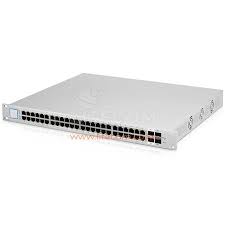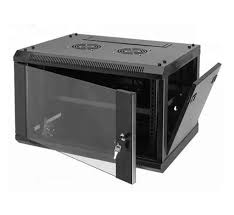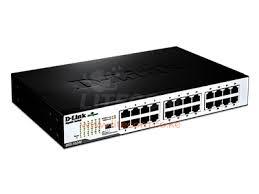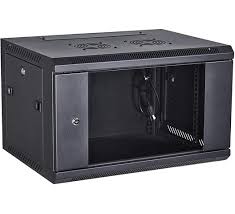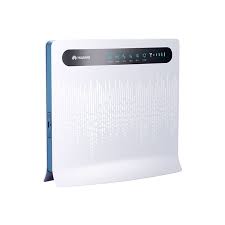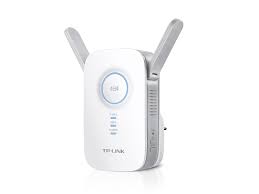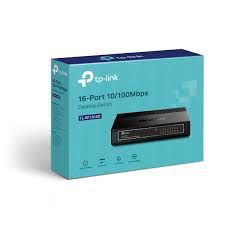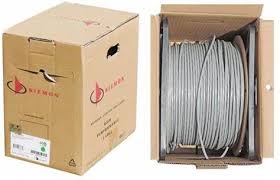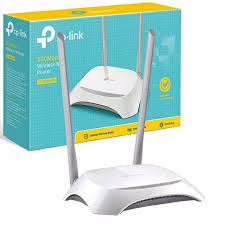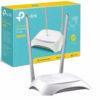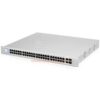Ubiquiti UniFi Switch 48 Port US-48-750
The Ubiquiti UniFi Switch US-48-750 represents the flagship model in the UniFi switching lineup, delivering enterprise-scale connectivity through 48 Gigabit ports with substantial Power over Ethernet capabilities. This managed switch combines high port density with an impressive 750W PoE+ budget, addressing the infrastructure needs of large organizations, educational institutions, and enterprise environments.
Network administrators choose the US-48-750 when deploying comprehensive network infrastructure that requires both maximum connectivity and extensive PoE device support under unified management. The switch operates exclusively through the UniFi Network Controller, enabling centralized configuration and monitoring across entire network deployments.
Organizations implementing large-scale IP telephony, wireless infrastructure, or security camera systems find the US-48-750 provides the port density and power capacity necessary to support hundreds of connected devices through a single switching platform.
UniFi Controller Integration and Centralized Management
The US-48-750 operates through the UniFi Network Controller software platform, providing network administrators with unified management capabilities across switches, access points, gateways, and security appliances. This centralized approach eliminates device-by-device configuration while ensuring consistent policy enforcement across entire network infrastructures.
Advanced management features include:
- Zero-Touch Provisioning: Automatic device discovery and configuration deployment
- Real-Time Analytics: Live traffic monitoring and performance metrics
- Topology Visualization: Interactive network mapping and device relationships
- Centralized VLAN Management: Drag-and-drop network segmentation
- User-Based Access Control: Dynamic policy assignment and enforcement
- Historical Reporting: Long-term performance trending and capacity planning
- Firmware Management: Coordinated updates across all managed devices
Comprehensive PoE+ Implementation and Power Management
The 750W PoE+ budget of the US-48-750 supports extensive powered device deployments, providing up to 30W per port for demanding equipment such as PTZ cameras, high-powered access points, and advanced IP phones. Intelligent power allocation maximizes device connectivity while preventing system overloading during peak demand periods.
Advanced power management capabilities enable administrators to prioritize critical devices, schedule power cycling for maintenance purposes, and monitor real-time power consumption across all connected devices. These features prove essential in large deployments where power management directly impacts operational reliability.
Port Configuration and High-Density Architecture
Physical connectivity encompasses 48 x 10/100/1000 Mbps Ethernet ports with full PoE+ capability, plus 4 x 1/10 Gbps SFP+ uplink ports for high-speed backbone connections. The 1U rackmount design maximizes port density while accommodating standard equipment racks in space-constrained server rooms.
Technical specifications include:
- Switching Capacity: 176 Gbps non-blocking throughput
- Forwarding Rate: 130.95 Mpps wire-speed performance
- MAC Address Table: 16,384 entries with automatic learning
- Buffer Memory: 12 MB shared packet buffer allocation
- PoE Power Budget: 750W total across all 48 ports
- Power Consumption: 850W maximum including full PoE load
- Operating Temperature: 0°C to 45°C (32°F to 113°F)
Enterprise-Grade Layer 2 Switching Features
The US-48-750 implements comprehensive Layer 2+ switching protocols essential for enterprise network environments. VLAN support enables sophisticated network segmentation for security purposes, departmental isolation, and traffic optimization across large organizational structures.
Advanced switching capabilities include Spanning Tree Protocol variants for redundancy, Link Aggregation Control Protocol for high-bandwidth connections, and Quality of Service implementation that prioritizes business-critical traffic during periods of network congestion.
Security Features and Access Control Implementation
Enterprise security requirements are addressed through comprehensive access control mechanisms including 802.1X authentication, MAC address filtering, and advanced storm control. The US-48-750 supports dynamic VLAN assignment based on user credentials and device types.
Security implementations encompass:
- 802.1X Authentication: User and device-based network access control
- Dynamic VLAN Assignment: Automatic network segmentation based on authentication
- Port Security: MAC address limiting and violation handling
- DHCP Snooping: Protection against rogue DHCP server attacks
- Access Control Lists: Layer 2, 3, and 4 traffic filtering capabilities
- Port Isolation: Prevention of lateral network movement
- Guest Network Support: Secure visitor access with bandwidth limitations
Advanced PoE Management and Device Control
Intelligent PoE management features enable granular control over power delivery to connected devices. The US-48-750 supports time-based PoE scheduling, power cycling for remote device resets, and power priority assignment for critical infrastructure components.
Real-time PoE monitoring provides detailed visibility into power consumption patterns, enabling administrators to optimize power allocation and identify devices requiring maintenance or replacement. These capabilities prove particularly valuable in security camera deployments where power reliability directly impacts system effectiveness.
Performance Optimization and Traffic Analysis
Built-in Deep Packet Inspection capabilities provide administrators with detailed insight into network traffic patterns and application usage. The US-48-750 enables traffic shaping and bandwidth limiting on a per-port or per-VLAN basis, ensuring fair resource allocation across diverse user groups.
Quality of Service implementation includes eight hardware queues with advanced scheduling algorithms that accommodate complex traffic prioritization requirements. Voice and video traffic receive appropriate priority while maintaining performance for data applications during peak usage periods.
Large-Scale Deployment Applications
Enterprise environments frequently deploy the US-48-750 as core distribution switches connecting departmental networks, server infrastructure, and building-wide services. The combination of high port density and substantial PoE capacity eliminates the need for separate PoE injectors while providing centralized power management.
Educational institutions utilize the switch in dormitory buildings, classroom facilities, and administrative centers where diverse PoE devices require centralized management and monitoring. The UniFi Controller enables IT staff to monitor thousands of connected devices through a single interface.
Integration with UniFi Ecosystem Components
The US-48-750 operates seamlessly with other UniFi products, creating comprehensive network solutions under unified management. Integration with UniFi Security Gateways enables advanced firewall policies, while UniFi Access Points receive centralized wireless configuration and optimization.
Network topology discovery automatically maps device relationships and traffic flows, simplifying troubleshooting and capacity planning activities. Unified alerting across all UniFi devices provides administrators with comprehensive visibility into network health and performance.
High-Availability Features and Redundancy
Enterprise network requirements include high-availability features that minimize downtime and ensure business continuity. The US-48-750 supports link aggregation for redundant uplink connections and Spanning Tree Protocol variants for loop prevention in redundant topologies.
Redundant power supply support (available in select models) provides additional reliability for mission-critical deployments. Hot-swappable fans and power supplies enable maintenance without network interruption in environments requiring continuous operation.
Monitoring and Analytics Capabilities
Comprehensive monitoring functions provide real-time visibility into switch performance, port utilization, and PoE consumption. Historical data collection enables trend analysis and capacity planning for growing network requirements.
The US-48-750 supports SNMP for integration with third-party monitoring systems, though most organizations find the UniFi Controller provides sufficient monitoring and alerting capabilities. Custom dashboards enable administrators to focus on metrics most relevant to their specific deployment requirements.
Scalability and Network Growth Management
The high port density of the US-48-750 provides room for significant network expansion without requiring additional switching hardware. Stacking capabilities enable multiple switches to operate as a single logical unit, simplifying management while increasing total port count.
Configuration templates and bulk deployment tools streamline the addition of new switches to existing networks. The UniFi Controller automatically propagates configuration changes across multiple switches, ensuring consistent policies as networks expand.
Total Cost of Ownership and Value Analysis
The US-48-750 delivers enterprise-grade capabilities at prices significantly below traditional enterprise switching solutions while providing superior management integration. Centralized management reduces administrative overhead compared to device-by-device configuration approaches.
Energy efficiency features and intelligent PoE management contribute to reduced operational costs over the switch’s operational lifetime. The combination of high port density and substantial PoE budget often eliminates the need for multiple smaller switches, reducing rack space requirements and power consumption.

